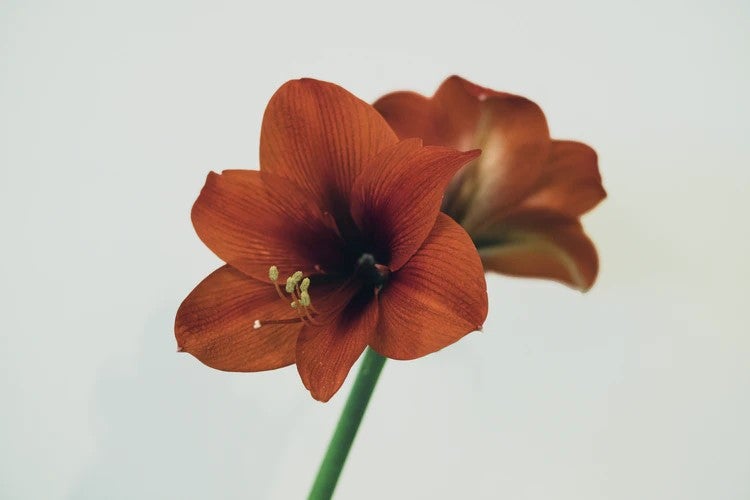Loving Your Garden: How To Take Care Of An Amaryllis Flower To Last Long
Published 7:39 pm Monday, January 25, 2021

Sponsored Content
The most satisfying thing anyone can achieve is to start a garden. Planting fragrant flowers, anybody can benefit from being a little messy on their hands. And you can already picture out amaryllis when deciding what to place in your garden.
Still, gardening should not be complicated; you could simplify gardening around your own pace until you pull your plan down into small steps. And eventually, with colorful blooms, and beautiful views, amaryllis can show you the rewards of your hard work.
Caring and Growing Amaryllis
There are many expectations for the plant owner if the first bulb or the thirtieth, as it grows as a bright green bud, develops into a beautiful amaryllis flower!
Amaryllis are delicate perennials; most of them are drought resistant outdoors, mostly in zones 9 to 11. An amaryllis plant, when properly cared for, can survive for about 75 years! Amaryllis is a long-lasting cut flower and grows dramatically.
The amaryllis can be a great choice of flowers and can be bought as bare or rooted bulbs for your garden and valued for their spectacular trumpet-shaped flowers grown on leafless scapes or stalks about 1 to 2 feet. These flowers would give dramatic color to lawns, houses, and gardens and be a great present to gardeners from novice to expert.
While the most widely known colors are deep burgundy, pink, apricot, salmon, pink, white, and red, several other varieties are bicolored, such as picotee, green, and purple, with petals of different shades on the edges.
Creating Your Color Palette
Creating A Peaceful Environment
It is important to take precautions, as too much variation may seem tiresome. You can’t get everything shouting at you in your garden, you need to have separate zones for vivid colors or heavy drama for neutrals. Above all, you choose colors in your garden that you adore.
Creating Excitement
Since sticking to several identical hues will create a sense of unity, juxtaposition is produced by complementary shades, opposite mostly on your color wheel. The yellow and blue combination, for instance, is fresh, summery, and vibrant.
Warm colors such as red, orange, and yellow make the most out of the light in a sunny place, particularly during the ‘golden hours,’ whenever the sun will rise or set. Nevertheless, hot shades might look very plain on their own.
Creating Unity
When deciding a color scheme, it is recommended to choose something that can better unify the landscape. Choosing combinations and various colors of similar colors can give an impact without being dominant.
Planting Your Bulbs
In narrow containers, amaryllis grows well. Terracotta, ceramic, metal, and plastic containers are made. Here are the steps in planting your bulbs.
- Without any signs of damage, decay, and mold, bulbs should be dry and firm.
- Choose a container that has either one more hole in the bottom and sinks instantly.
- The possibility of the bulb or root rotting from excessive moisture would be reduced through proper drainage.
- For you to allow space for better root development, the container’s diameter must be around 1 inch bigger than the widest portion of the bulb and double the bulb’s height.
- Load your pot with clean, fresh, potting soil high in organic matter such as half full of peat moss
- In your pot, set the bulb so that the roots remain resting upon its potting soil.
- The bulb must sit just above the container’s edge.
- Apply some soil, tap it all over the bulb until your bulb stays visible from about one-third to one-half
- Firm the medium from around the bulb for potting
- Place the pot in a sink where it can water and drain freely until the potting soil is fully saturated. Make it to drain thoroughly.
- Place your pot and position it in a sunny spot on a saucer.
After – Flower Care
The best way to maintain amaryllis alive for long years is to keep the plants vigorously growing once they have stopped blooming.
- Once the flowers have started to fade, cut them apart to keep the seed from growing. The formation of seeds will replenish essential energy reserves throughout the bulb, which minimizes blooming
- Unless it has become pink, do not cut the flower stem
- Photosynthesis, which generates energy that has been retained in the bulb for potential flowers and leaf growth, would help in promoting a green stem
- If for the next blooming cycle, the bulb may not grow a flowering stalk, it is because the sufficient nutrients have not yet been retained during the post-blooming cycle
- Blooming would be enhanced by keeping the plant growing and healthy
- Please place them in the sunniest possible position indoors once your plant has finished a full bloom. Long, smooth leaves should keep growing. These leaves can promote photosynthesis
- With an all-purpose houseplant plant, fertilizer started watering and fertilizing the plant frequently.
Takeaway
These things could help you to make the right decisions when beginning a flower garden with amaryllis, with seemingly limitless unique features, letting you lay back on a beautiful afternoon and appreciate the value of the blossoms of your efforts.

